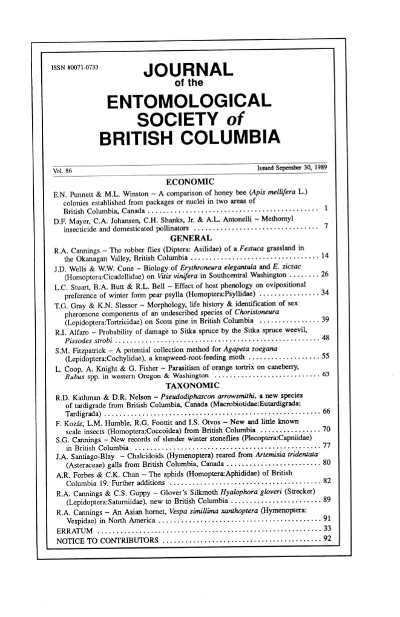Methomyl Insecticide and Domesticated Pollinators
Abstract
Susceptibility to methomyl sprays was greatest for the alfalfa leafcutting bee, Megachile rotundata (F); least for the honey bee, Apis mellifera L.; and intermediate for the alkali bee, Nomia melanderi Cockerell. Methomyl at 1.12 kg (AI)/ha had low residual hazard to honey bees, and at 0.6 kg (AI)/ha it had low residual hazard to leafcutting and alkaki bees after one day. Field tests of methomyl on pollen-shedding corn, blooming red raspberry, and blooming blueberry resulted in reduced bee visitation and low adult bee mortality.
Downloads
Issue
Section
License
Authors who publish with the Journal of the Entomological Society of British Columbia agree to the following terms:
-Authors retain copyright and grant the journal right of first publication with the work simultaneously licensed under a Creative Commons Attribution License that allows others to share the work with an acknowledgement of the work's authorship and initial publication in this journal.
-Authors are able to enter into separate, additional contractual arrangements for the non-exclusive distribution of the journal's published version of the work (e.g., post it to an institutional repository or publish it in a book), with an acknowledgement of its initial publication in this journal.
-Authors are permitted and encouraged to post their work online (e.g., in institutional repositories or on their website) prior to and during the submission process, as it can lead to productive exchanges, as well as earlier and greater citation of published work (See The Effect of Open Access).


